Stackable Flower Pot Planters: The Ultimate Guide for Australian Gardeners
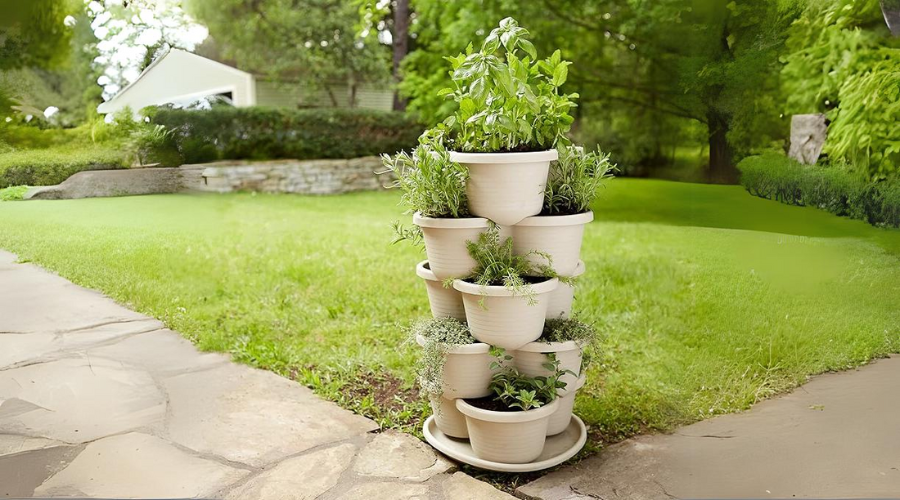
Gardening enthusiasts in Australia are always on the lookout for innovative ways to enhance their green spaces, and stackable flower pot planters are a prime example of this creativity. These versatile planters are designed to optimise space while adding a touch of sophistication to your garden, balcony, or even indoor areas. Whether you are a seasoned gardener or a novice with a budding interest, stackable flower pot planters offer a unique and practical solution for cultivating a variety of plants.
Stackable flower pot planters, as the name suggests, consist of multiple pots that can be stacked vertically. This design is particularly advantageous for urban gardeners who may have limited horizontal space but plenty of vertical room to spare. By allowing you to grow upwards, these planters maximise the number of plants you can nurture within a compact footprint.
Moreover, stackable planters are not just about saving space; they are also about adding aesthetic appeal. With their sleek, modern designs, they can transform any area into a lush, green oasis. The flexibility to rearrange and restack the planters as needed means you can constantly refresh the look of your garden and experiment with different plant arrangements.
Benefits of using Stackable Planters
Stackable flower pot planters come with a plethora of benefits that make them a popular choice among Australian gardeners. Here are some of the key advantages:
Space-Saving Advantages
One of the most significant benefits of stackable planters is their ability to save space. In urban settings where garden space is often at a premium, these vertical planters allow you to grow a variety of plants without taking up much ground area. Whether you are working with a small balcony, patio, or even a windowsill, stackable planters let you make the most of every inch.
Versatility in Gardening
Stackable planters are incredibly versatile. They are suitable for growing a wide range of plants, from flowers and herbs to vegetables and succulents. This versatility means you can create a mixed garden that caters to your culinary, decorative, and aromatic needs all in one compact arrangement. You can also use this on kitchen countertops to grow herbs.
Easy Mobility and Accessibility
These planters are designed with portability in mind. Many models come with wheels or are lightweight enough to be moved easily. This mobility allows you to reposition your plants to capture the best sunlight or to bring them indoors during extreme weather conditions. Additionally, the vertical structure of stackable planters makes it easier to reach and tend to your plants, reducing the need for bending or crouching.
Eco-Friendly Aspects
Stackable planters can also be an eco-friendly choice. Many are made from recycled materials, reducing their environmental footprint. Moreover, by growing your own herbs, vegetables, and fruits, you can decrease your reliance on store-bought produce, thereby reducing packaging waste and carbon emissions associated with transporting food.
Choosing the right material for the planter
Selecting the right material for your stackable flower pot planter is crucial to ensure the longevity and health of your plants. Different materials offer various benefits and drawbacks, and your choice will largely depend on your specific needs and the Australian climate. Here’s a closer look at some of the most popular materials:
Plastic
Plastic is one of the most commonly used materials for stackable planters due to its lightweight nature and durability. They are generally cheaper and available in a wide range of colours and designs. They are also resistant to weather extremes, which is a significant advantage in Australia’s varying climate. However, it’s essential to choose high-quality, UV-resistant plastic to avoid degradation over time. The downside is that plastic is less breathable than other materials, which can affect soil aeration and drainage.
Ceramic
Metal
Metal planters, such as those made from galvanised steel or aluminium, offer a modern, industrial look. They are incredibly durable and can withstand harsh weather conditions.
Metal planters are also excellent at retaining moisture, which can be beneficial in dry areas. However, they can become very hot under direct sunlight, potentially harming the roots of your plants. To mitigate this, it’s advisable to place metal planters in shaded areas or use them for plants that thrive in warm soil.
Terracotta
Terracotta planters are made from natural clay, making them a breathable option that promotes excellent soil aeration and drainage. This material is particularly suitable for plants that prefer drier conditions, such as succulents and cacti. Terracotta also has a rustic charm that complements various garden styles. However, terracotta is porous and can lose moisture quickly, necessitating more frequent watering. It is also prone to cracking in extremely cold weather, although this is less of an issue in most parts of Australia.
Wood
Wooden planters provide a natural, classic look and are generally made from rot-resistant woods like cedar or teak. They are excellent insulators, helping to keep roots cool in summer and warm in winter. However, wooden planters require regular maintenance, such as sealing or staining, to prevent decay and pest infestations. They can also be heavier than other materials, making them less portable.
When choosing the material for your stackable planter, consider factors such as weight, durability, aesthetic appeal, and your local climate conditions. Each material has its unique benefits and challenges, so select one that best suits your gardening needs.
Ideal Plants for Stackable Planters
Stackable flower pot planters offer a versatile growing environment, making them suitable for a variety of plants. When selecting plants for your stackable planters, consider factors such as growth habits, sunlight requirements, and water needs. Here are some ideal plant choices that thrive in stackable planters:
Herbs
Herbs are a fantastic option for stackable planters. They are generally compact, have shallow root systems, and can be easily harvested. Popular choices include:
- Basil: Prefers full sun and well-drained soil.
- Thyme: Tolerant of dry conditions and thrives in sunny spots.
- Parsley: Enjoys partial shade and consistent moisture.
- Mint: Grows well in part shade to full sun but can be invasive, so containing it in a planter is ideal.
Vegetables
Growing vegetables in stackable planters can be both rewarding and practical, especially if you have limited space. Consider these options:
- Lettuce: Prefers cooler temperatures and partial shade.
- Spinach: Thrives in partial shade and well-drained soil.
- Cherry Tomatoes: Require full sun and regular watering.
- Radishes: Grow quickly and are perfect for small spaces.
Flowers
Adding flowering plants to your stackable planters can enhance their visual appeal. Some great choices include:
- Marigolds: Full sun lovers that are also known for deterring pests.
- Pansies: Prefer cooler weather and partial sun.
- Petunias: Thrive in full sun and produce vibrant blooms.
- Begonias: Ideal for shaded areas and add a touch of colour.
Succulents
Succulents are perfect for stackable planters due to their low water needs and striking appearance. Consider these varieties:
- Aloe Vera: Requires plenty of sunlight and well-drained soil.
- Echeveria: Prefers full sun and is drought-tolerant.
- Sedum: Thrives in sunny spots and requires minimal water.
- Hens and Chicks: Hardy and adaptable to various conditions.
Strawberries
Strawberries are an excellent choice for stackable planters, allowing you to grow your own delicious fruit. They require full sun and consistent moisture. Their trailing growth habit makes them perfect for cascading over the edges of the planters.
When selecting plants for your stackable planters, consider mixing and matching different types to create a visually appealing and diverse garden. Keep in mind each plant’s specific needs and try to group plants with similar requirements together. This way, you can ensure that all your plants thrive in their shared environment.
How to Arrange Plants in Stackable Planters
Arranging plants in stackable flower pot planters can be both an art and a science. The goal is to create a visually appealing display while ensuring each plant has the necessary conditions to thrive. Here are some tips on how to arrange your plants effectively:
Step-by-Step Guide to Arranging Plants
Plan Your Design
Sketch Your Layout: Before you start planting, draw a rough sketch of your stackable planter and plan where each plant will go. This helps in visualising the final look and ensures a balanced arrangement.
Consider Plant Needs: Group plants with similar sunlight, water, and soil requirements together to simplify maintenance.
Start from the Bottom
Base Layer: Begin with the bottom layer of your stackable planter. Place larger or heavier plants here to provide stability. Ensure these plants do not overshadow those above them.
Drainage Layer: Use a layer of gravel or small stones at the bottom of each pot to ensure proper drainage.
Middle Layers
Medium-Sized Plants: Use the middle layers for medium-sized plants. These could be your main focus plants or those that add bulk to your arrangement.
Balance and Symmetry: Try to maintain balance and symmetry by placing similar plants opposite each other or in a staggered pattern.
Top Layer
Smaller, Trailing Plants: The top layer is ideal for smaller plants or those with a trailing habit. This allows them to cascade down the sides of the planter, creating a lush, full look.
Highlight Plants: Place any standout or focal plants here to draw the eye upwards.
Design Principles for Aesthetic Appeal
Balancing Plant Needs
Colour Coordination: Choose a harmonious colour palette for your plants. Consider using complementary or analogous colours to create visual interest.
Texture and Form: Mix plants with different textures and forms. For example, combine spiky herbs like rosemary with soft, trailing plants like ivy to create contrast.
Height Variation: Use plants of varying heights to add depth and dimension to your arrangement. Taller plants should be placed towards the centre or back, with shorter plants around the edges.
Sunlight: Ensure that all plants receive the appropriate amount of sunlight. Rotate the planter periodically if necessary to ensure even light distribution.
Watering: Consider the watering needs of each plant. Avoid placing water-loving plants directly above those that prefer drier conditions, as excess water can trickle down and affect the plants below.
Soil Requirements: Use a high-quality, well-draining potting mix to provide a healthy growing environment. Consider adding slow-release fertilisers to support plant growth.
By thoughtfully arranging your plants, you can create a stunning, functional display that brings beauty and life to any space. Remember to periodically review and adjust your arrangement as your plants grow and their needs change.
Maintenance Tips
Maintaining your stackable flower pot planters is essential to ensure that your plants stay healthy and flourish. Here are some key tips to keep your stackable planters in top condition:
Watering and Feeding Guidelines
Consistent Watering: Regularly check the moisture level of the soil and water your plants as needed. Because stackable planters can have varying water requirements depending on the type of plant and the position in the stack, be mindful of each plant’s needs. A good rule of thumb is to water when the top inch of soil feels dry to the touch.
Proper Drainage: Ensure that each layer of the stackable planter has adequate drainage to prevent waterlogging. Consider using a well-draining potting mix and adding a layer of gravel or small stones at the bottom of each pot.
Fertilisation: Use a balanced, slow-release fertiliser to provide essential nutrients to your plants. Fertilise according to the needs of the specific plants in your stackable planter. For instance, flowering plants may require more phosphorus, while leafy greens benefit from higher nitrogen levels.
Pest Control
Regular Inspections: Frequently inspect your plants for signs of pests or diseases. Look for discoloured leaves, spots, or any unusual changes in growth.
Natural Remedies: Use natural pest control methods, such as introducing beneficial insects like ladybugs or using neem oil sprays. Avoid harsh chemical pesticides that can harm beneficial organisms and the environment.
Cleanliness: Keep the area around your stackable planters clean and free of debris. Remove any dead leaves or plant material promptly to prevent attracting pests.
Seasonal Maintenance
Adjusting for Weather: In extreme weather conditions, you may need to adjust the placement of your stackable planters. For example, move them to a sheltered spot during heavy rains or provide shade during scorching summer days.
Winter Care: In regions with cold winters, consider bringing your stackable planters indoors or using frost covers to protect your plants from freezing temperatures.
Pruning and Deadheading: Regularly prune your plants to encourage healthy growth and remove any dead or damaged stems. Deadheading spent flowers can also promote further blooming in flowering plants.
Soil Health
Soil Refresh: Periodically refresh the soil in your stackable planters to maintain its fertility. This can be done by gently removing the top layer of old soil and adding fresh, nutrient-rich potting mix.
Aeration: Occasionally aerate the soil by gently loosening it with a small garden fork. This helps improve air circulation and root health.
Replanting and Rotation
Replanting: Over time, some plants may outgrow their pots or deplete the soil of nutrients. It can give the plants more room to grow and access to fresh soil.
Rotation: Rotate your plants periodically to ensure even exposure to sunlight and to prevent any one side from becoming leggy or overgrown.
By following these maintenance tips, you can keep your stackable flower pot planters healthy and thriving throughout the year. Regular care and attention will ensure that your plants continue to provide beauty and enjoyment in your garden.
Creative Design Ideas
Stackable flower pot planters are not only functional but also offer endless opportunities for creative expression. Here are some inspiring design ideas to help you make the most of your stackable planters:
Colour Themes and Complementary Plants
Monochromatic Scheme: Create a sophisticated look by using plants of the same colour but in different shades. For example, a mix of white, cream, and pale yellow flowers can create a serene and elegant display.
Contrasting Colours: Use contrasting colours to make your planters stand out. Pairing plants with complementary colours, such as purple and yellow or red and green, can create a vibrant and eye-catching arrangement.
Seasonal Themes: Change your plant selections with the seasons to keep your garden dynamic and fresh. In spring, opt for bright, pastel flowers like tulips and daffodils. In autumn, switch to warm hues with plants like mums and ornamental grasses.
Incorporating Decorative Elements
Ornaments and Accents: Add small garden ornaments, fairy lights, or decorative stones to enhance the visual appeal of your stackable planters. These accents can reflect your personal style and add a whimsical touch.
Mulching: Use decorative mulch, such as coloured stones or glass beads, to cover the soil surface. This not only adds colour but also helps retain moisture and reduce weed growth.
Vertical Garden Art: Attach small sculptures, mirrors, or art pieces to the structure of your stackable planters. This can create a focal point and add an artistic element to your garden.
Inspiring Real-Life Examples
Herb Tower: Create a culinary herb garden by planting a variety of herbs in your stackable planters. Arrange them by height, with taller herbs like rosemary and basil at the bottom and trailing herbs like thyme and oregano at the top. This not only looks attractive but also makes harvesting easy.
Succulent Spiral: Design a succulent garden by arranging different types of succulents in a spiral pattern. Use colourful and texturally diverse succulents to create an eye-catching display that requires minimal maintenance.
Floral Cascade: Plant trailing flowers like petunias, ivy, and lobelia in the top layers of your stackable planters. As these plants grow, they will cascade down the sides, creating a waterfall effect of blooms and greenery.
Edible Garden: Combine vegetables, herbs, and edible flowers in your stackable planters to create a functional and beautiful edible garden. This is perfect for small spaces and provides fresh produce right at your fingertips.
Vertical Garden Walls
Living Walls: Stack multiple planters against a wall or fence to create a living wall of greenery. This can serve as a stunning backdrop for your garden or even as a privacy screen.
Patterned Planting: Arrange your plants in geometric patterns or rows to create a structured and modern look. This can be particularly effective with succulents or small flowering plants.
Themed Gardens
Mediterranean Garden: Use drought-tolerant plants like lavender, rosemary, and olive trees to create a Mediterranean-inspired garden. Add terracotta pots and decorative elements like mosaic tiles to complete the look.
Wildlife Garden: Plant native Australian flowers and shrubs to attract local wildlife, such as birds, bees, and butterflies. This not only beautifies your garden but also supports local ecosystems.
By experimenting with these creative design ideas, you can transform your stackable flower pot planters into a stunning and personalised garden display. Whether you prefer a minimalist, modern look or a lush, vibrant garden, the possibilities are endless.
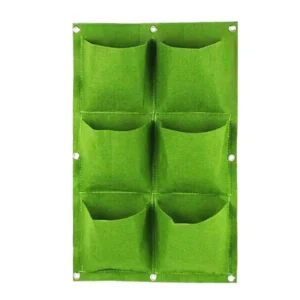





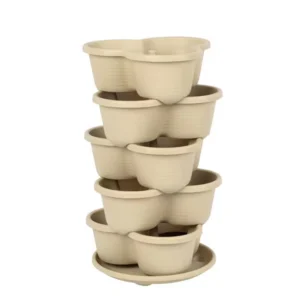
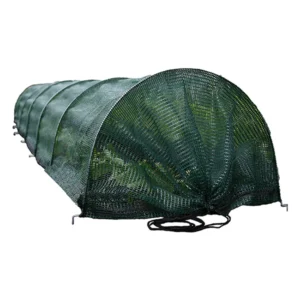
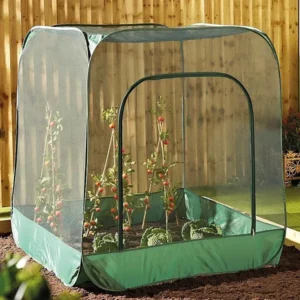
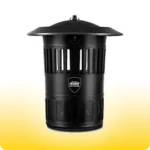 Mosquito Traps
Mosquito Traps